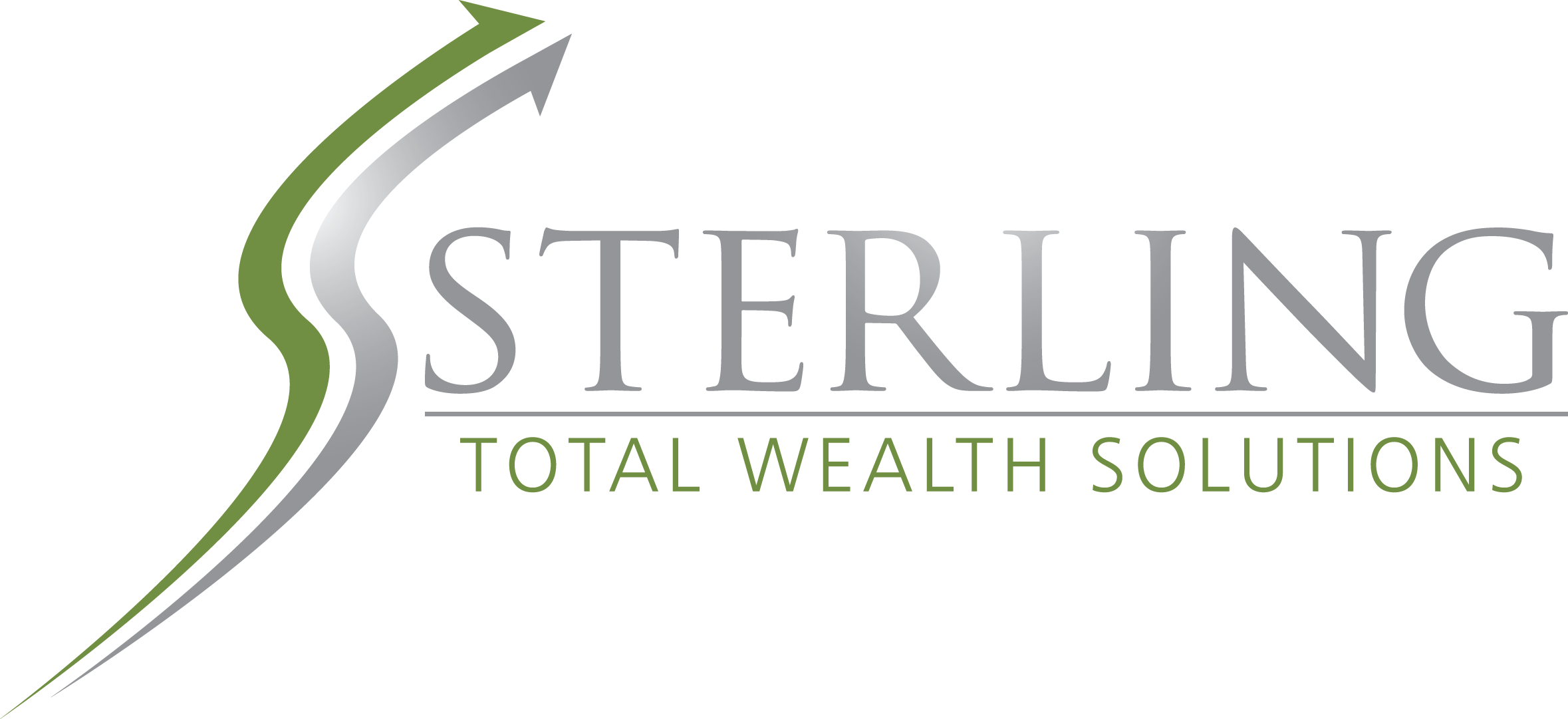In this Q1 recap: COVID-19 hits the United States, followed by heavy economic volatility, government stimulus, and an as-yet untold human cost.
Quarterly Economic Update
A review of Q1 2020 | Presented by Sterling Wealth Advisors
The spread of COVID-19 sent stocks tumbling in the first quarter, as health and economic costs of the pandemic began to mount. Stocks remained under pressure despite the Federal Reserve’s lowering of short-term interest rates and the government’s stimulus efforts through the Coronavirus Aid, Relief, and Economic Security Act (CARES) Act. The DJIA sank 23.2% and the S&P 500 dropped 20% on the quarter. The volatility following the novel coronavirus has left all but a handful of sectors in a prolonged period of uncertainty. With millions of Americans staying at home in an effort to “flatten the curve” of COVID-19’s impact on people, businesses are coping with closing for the duration, altering practices, or facing staffing issues.1
The Federal Reserve cut interest rates to zero on March 15 and announced several monetary actions designed to support households and businesses. However, markets were unfazed by the Fed’s aggressive move, electing to instead focus on the contraction of economic growth that many are expecting. Millions of Americans have applied for unemployment, with a spike of 3.3 million seen in March. Layoffs and furloughs are foreseen throughout early Q2.2,3
The Consumer Price Index (CPI) registered an annualized advance of 2.4% in February, ahead of the COVID-19 volatility in the United States. Inflation was ahead 0.1% in the same period. Consumer spending was at 0.2% in the middle of the quarter, with the University of Michigan’s Consumer Sentiment Index at 101.0. Retail sales were at 4.35%, annualized. The Institute of Supply Management (ISM) Purchasing Managers Index (PMI) up nearly two points to 57.3, mid-quarter. All these figures may be revised dramatically in the second quarter as more data is compiled about the economic cost of the pandemic.4,5
GLOBAL ECONOMIC HEALTH
The main story in China for the first quarter of 2020, affecting nearly every aspect of the Chinese economy, has been the COVID-19 outbreak. Anticipating the rough road ahead, a number of international financial institutions have revised their growth estimates for China downward, leaving some to predict the worst year in decades. Despite this, the Caixin/Markit Manufacturing PMI came in at 50.1 in March, just within the realm indicating growth, and up from February’s 40.3. As the quarter came to a close, U.S. lawmakers were questioning the accuracy of China’s reported number of COVID-19 cases as the U.S. grappled with the pandemic.6,7
European countries are also facing hardship, with Italy and Spain seeing a higher-than-average number of cases. The European Commission predicts a recession, with the overall gross domestic product (GDP) sinking 1% for 2020. This follows 1% of growth for the GDP in the final quarter of 2019. Facing heavy unemployment, the European Commission set up a 100 billion euros ($110 million in U.S. dollars) program to help keep workers employed, while also pledging to purchase as much as 750 billion euros to keep markets at ease through the purchase of financial assets.8,9,10
WORLD MARKETS
The arrival of COVID-19 signaled volatility around the globe. The numbers at the end of the quarter include: the U.K.’s FTSE 100 (-13.81%), the German Dax (-16.44%), the French CAC 40 (-17.21%), Japan’s Nikkei 225 (-10.53%), Australia’s All-Ordinaries (-21.51), Mexico’s Bolsa (-16.38%), Brazil’s Bovespa (-29.90), China’s Shanghai Composite (-4.51), Hong Kong’s Hang Seng (-9.67), South Korea’s Kospi Composite (-11.69), and Russia’s RTS (-21.95).11,12
The MSCI EAFE Index (which measures performance across developed stock markets outside North America) took a 14.77% fall at the end of Q1.13
COMMODITIES MARKETS
The oil market dominated the commodities headlines during the first quarter. The failure of Russia to join Saudi Arabia in supporting lower oil production targets left Saudi Arabia fuming and responding with an announcement of its intention to raise oil output. Oil prices plummeted on the news, contributing to the stock market’s woes. While lower oil prices represent a boon to consumers in the form of lower gasoline prices and a relief to companies with high energy consumption (e.g., airlines, chemical), they also pose a risk to the American energy industry.
Should low oil prices persist, it may lead to lower capital expenditures, labor force reductions, and troubles in the credit markets as less-capitalized companies struggle to meet their debt obligations. As the quarter came to a close, there was some speculation that President Trump would take a larger role in working with Russia and Saudi Arabia on production targets.
Elsewhere, WTI crude closed out the quarter at $20.34 a barrel. Gold finished the quarter at $1,572 an ounce on the NYMEX; silver, at $13.98 an ounce.14,15
REAL ESTATE
Across the first quarter, new home sales moved from -0.4% for December to 7.9% in January and down again to -4.4% in February. Existing home sales for February rose 6.5%, compared to a 1.3% decrease for January and a 3.6% increase in December 2019. Housing starts declined over Q1 starting at 16.9% for December, -3.6% for January, and -1.5% for February.4
Mortgage rates started the first quarter (January 2) at 3.72% for 30-year mortgages, 3.16% for 15-year mortgages, and 3.46% for 5/1-year mortgages. At the end of the quarter (March 26), the 30-year mortgages were at 3.5%, 2.92% for 15-year mortgages, and 3.34% for 5/1-year mortgages.16
30-year and 15-year, fixed-rate mortgages are conventional home loans, generally featuring a limit of $484,350 ($726,525 in high-cost areas) that meet the lending requirements of Fannie Mae and Freddie Mac, but they are not mortgages guaranteed or insured by any government agency. Private mortgage insurance, or PMI, is required for any conventional loan with less than a 20% down payment.
This first quarter of 2020 was one of the worst for stocks in U.S. history. The Dow Jones Industrial Average (DJIA) closed at 21,917.16 for the quarter. The Standard and Poor’s 500 (S&P 500) ended Q1 at 2,584.59, while the NASDAQ Composite Index closed at 7,700.10.17
| MARKET INDEX | Y-T-D CHANGE | Q1 CHANGE | 2019 |
| DJIA | -23.20 | -23.20 | +22.34 |
| NASDAQ | -14.18 | -14.18 | +35.23 |
| S&P 500 | -20.00 | -20.00 | +28.88 |
| YIELD | 3/31 RATE | 3 MO AGO | 1 YR AGO |
| 10-YR TIPS | 0.70 | 1.92 | 2.41 |
Sources: barchart.com, wsj.com, bigcharts.com, treasury.gov – 3/31/20
Indices are unmanaged, do not incur fees or expenses, and cannot be invested into directly. These returns do not include dividends. 10-year TIPS real yield = projected return at maturity given expected inflation.
It is difficult to see, in the middle of the COVID-19 epidemic, exactly what the full impact will be. Suffice it to say, the cost in human terms has been staggering so far and seems certain to affect at least part of the coming quarter. As people and businesses adapt to extended periods of quarantine, the only thing that seems clear is that no aspect of American life will be unchanged. CARES Act stimulus checks are on the way for millions of Americans. The Federal Reserve has lowered interest rates. Further measures are being considered at the state and federal level. The only two things that seem truly certain are that action is being taken and that we’ll all breathe a sigh of relief once this crisis subsides.
QUOTE OF THE QUARTER

“If we are to learn to improve the quality of the decisions we make, we need to accept the mysterious nature of our snap judgments.”
malcolm gladwell
Securities offered through Registered Representatives of Cambridge Investment Research, Inc., a Broker/Dealer, Member FINRA/SIPC. Advisory services offered through Cambridge Investment Research Advisors, Inc., a Registered Investment Advisor. Sterling Wealth Advisors and Cambridge are not affiliated.
To learn more about Sterling Wealth Advisors, visit us on the web at www.sterlingwealthadvisorstx.com
Know someone who could use information like this? Please feel free send us their contact information via phone or email. (Don’t worry – we’ll request their permission before adding them to our mailing list.)
1 – CNN.com, March 31, 2020.
2 – Reuters, March 31, 2020.
3 – MarketWatch, April 1, 2020.
4 – Investing.com, April 1, 2020.
5 – MarketWatch, April 1, 2020.
6 – CNN.com, April 1, 2020.
7 – MarketWatch, March 31, 2020.
8 – Bloomberg, March 13, 2020.
9 – CNBC.com, April 1, 2020.
10 – New York Times, April 2, 2020.
11 – New York Times, March 31, 2020.
12 – Barchart.com, March 31, 2020.
13 – MarketWatch.com, March 31, 2020.
14 – Barchart.com, April 2, 2020.
15 – BusinessInsider.com, April 2, 2020.
16 – FreddyMac.com, April 2, 2020.
17 – Bloomberg.com, March 31, 2020.
